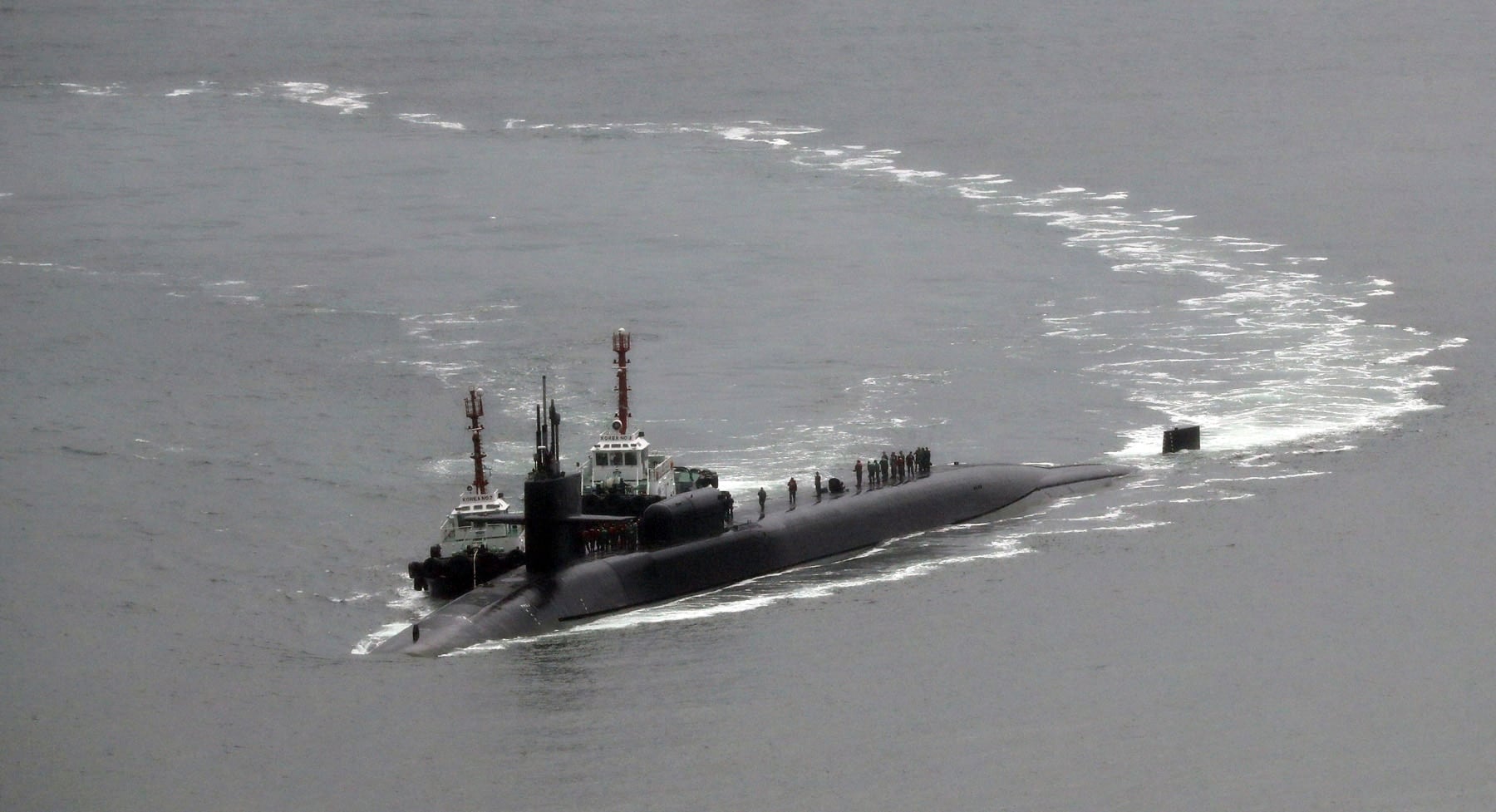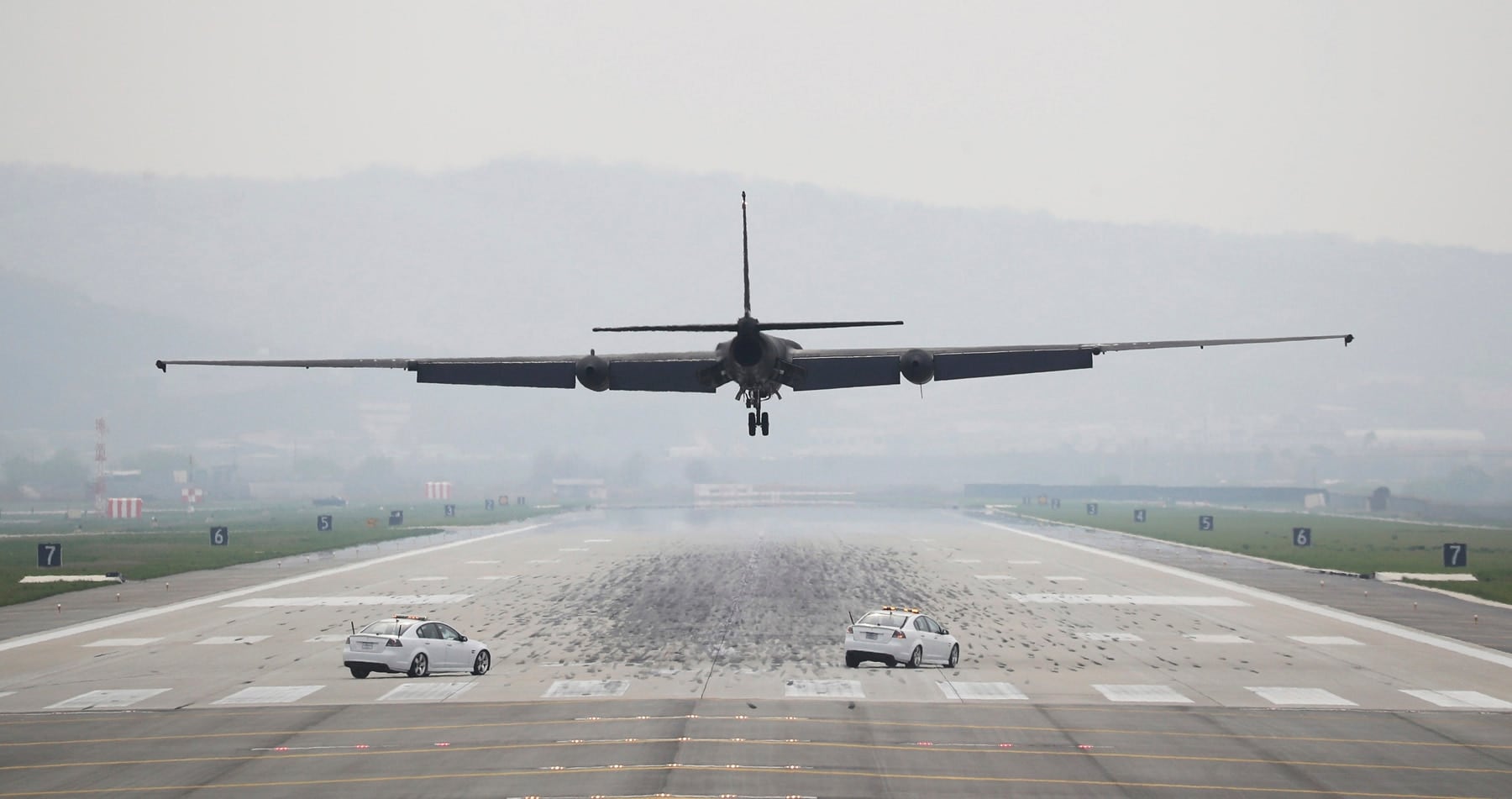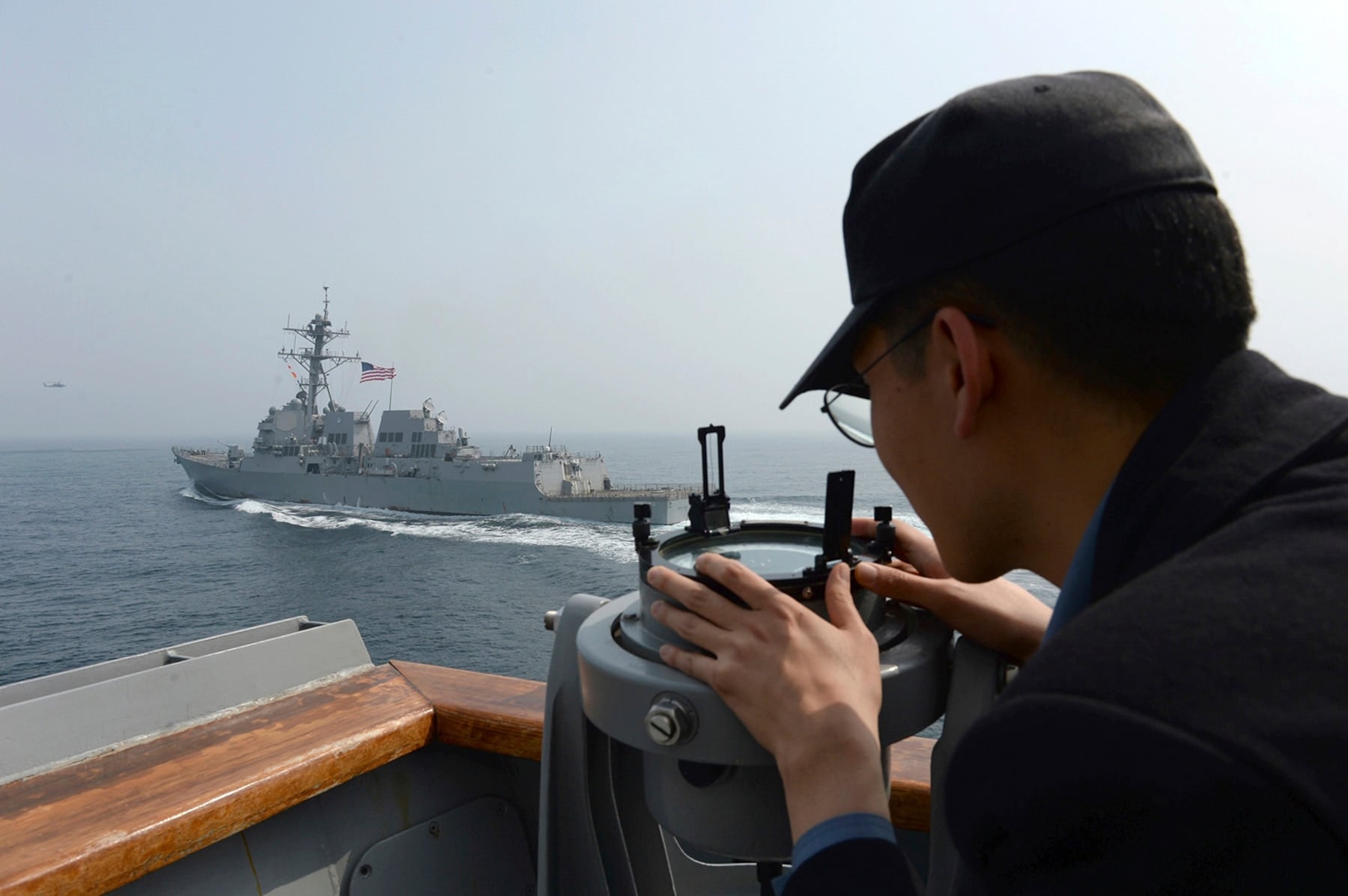SEOUL, South Korea — In a defiant bit of timing, South Korea announced Wednesday that key parts of a contentious U.S. missile defense system had been installed a day after rival North Korea showed off its military power.
The South's trumpeting of progress on setting up the Terminal High-Altitude Area Defense system, or THAAD, comes as high-powered U.S. military assets converge on the Korean Peninsula and as a combative North Korea signals possible nuclear and missile testing.
North Korea conducted live-fire artillery drills on Tuesday, the 85th anniversary of the founding of its million-person strong Korean People's Army. On the same day, a U.S. guided-missile submarine docked in South Korea, and the USS Carl Vinson aircraft carrier is headed toward the peninsula for a joint exercise with South Korea.
The moves to set up THAAD within this year have angered not only North Korea, but also China, the country that the Trump administration hopes to work with to rid the North of nuclear weapons. China, which has grown increasingly frustrated with its ally Pyongyang, and Russia see the system's powerful radars as a security threat.

The nuclear-powered submarine USS Michigan approaches to join the U.S. aircraft carrier USS Carl Vinson in drills near the Korean Peninsula, at Busan port in Busan, South Korea, Tuesday, April 25, 2017.
Photo Credit: Jo Jung-ho/Yonhap via AP
South Korea said in a statement Wednesday that unspecified parts of THAAD were installed. The statement said that Seoul and Washington have been pushing to get THAAD quickly working to cope with North Korea's advancing nuclear and missile threats. According to Yonhap news agency, the parts include two or three launchers, intercept missiles and at least one radar.
About 8,000 police officers were mobilized and the main road leading up to the site in the southeast was blocked earlier Wednesday, Yonhap reported. About 200 residents and protesters rallied in front of a local community center, some hurling plastic water bottles.
On Tuesday, North Korea conducted live-fire drills near the east coast city of Wonsan that involved 300 to 400 artillery pieces, Yonhap reported. An official from Seoul's Defense Ministry couldn't confirm those specific details.
North Korea's official media said early Wednesday that leader Kim Jong Un personally observed the exercises. The drills reportedly included submarine torpedo attacks on mock enemy warships "while fighters and bombers made zero feet flight above the sea to drop bombs on the targets," the Korean Central News Agency said.

A U.S. Air Force U-2 spy plane prepares to land at Osan Air Force Base in Pyeongtaek, South Korea, Tuesday, April 25, 2017. South Korea's military said Tuesday that North Korea held major live-fire drills in an area around its eastern coastal town of Wonsan as it marked the anniversary of the founding of its military.
Photo Credit: Hong Hae-in/Yonhap via AP
President Donald Trump has sent more U.S. military assets to the region in a show of force while leaning on China to exert economic pressure on its wayward ally. Chinese President Xi Jinping, who spoke to Trump on Monday, is urging restraint from both Pyongyang and Washington.
In Washington, top Trump administration officials are due to brief the entire U.S. Senate on Wednesday. A rapid tempo of North Korean weapons testing in the past year has pushed Kim Jong Un's authoritarian nation closer to developing a nuclear-tipped missile that could reach the U.S. mainland.
Republican Sen. Lindsey Graham voiced confidence that Trump won't allow North Korea to reach that point. Graham, a defense hawk who dined with Trump on Monday night, said the North should not underestimate the president's resolve.
The USS Michigan, a nuclear-powered submarine, arrived Tuesday at the South Korean port of Busan for what was described as a routine visit to rest crew and load supplies. The U.S. 7th Fleet said two American destroyers were conducting simultaneous maritime exercises with naval ships from South Korea and Japan.
North Korea routinely accuses the United States of readying for an invasion, and threatens pre-emptive strikes to stop it. An unnamed North Korean Foreign Ministry spokesman said the U.S. administration's policy to maximize pressure on North Korea was "little short of lighting the fuse of total war," the state news agency reported Tuesday.

A South Korean navy sailor watches the destroyer USS Wayne E. Meyer on April 25, 2017, during a joint exercises between the United States and South Korea in South Korea's West Sea. South Korea's military said Tuesday that North Korea held major live-fire drills in an area around its eastern coastal town of Wonsan as it marked the anniversary of the founding of its military.
Photo Credit: South Korean Defense Ministry via AP
The streets of Pyongyang, however, were quiet for Tuesday's anniversary, which was overshadowed by April 15 celebrations for the birthday of the nation's late founder Kim Il Sung, and were marked by a missile test the following day.
The Trump administration is also upping the ante diplomatically.
On Friday, Secretary of State Rex Tillerson will chair a special meeting of the U.N. Security Council.
Tillerson will be "very vocal" about nations enforcing sanctions on North Korea, State Department spokesman Mark Toner said. Trump said Monday the council must be prepared to impose stronger sanctions.
Associated Press writers Matthew Pennington and Richard Lardner in Washington, Hyung-jin Kim and Kim Tong-Hyung in Seoul, South Korea, Eric Talmadge in Pyongyang, North Korea and Edith M. Lederer at the United Nations contributed to this report.




